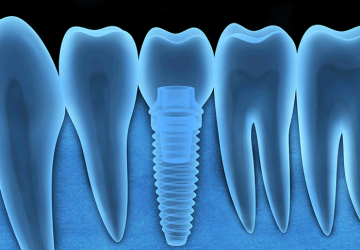- Published on
Revolutionary Breakthroughs in Dental Implants: Transforming the Future of Smile Restoration
Revolutionary Breakthroughs in Dental Implants: Transforming the Future of Smile Restoration
Recent years have seen remarkable changes in dental medicine, particularly with the introduction of dental implants. These advanced solutions were once deemed futuristic but are now the preferred choice for replacing lost teeth, providing a combination of long-lasting function and visual appeal. We explore the significance of dental implants in contemporary dentistry and the cutting-edge progressions that are pushing dental care to new heights.

Titanium posts, known as dental implants, are expertly embedded in the jawbone to act as a firm base for artificial teeth. These replacements have fundamentally changed the lives of those who have suffered tooth loss due to various reasons, including accidents, decay, or gum disease. Unlike dentures or bridges that rest on top of the gums, dental implants integrate into the bone system through a process called osseointegration. This results in unparalleled steadiness and combats the bone deterioration typically associated with tooth loss. The development of the ultimate dental implant has involved rigorous study and numerous trials. A key hurdle was identifying a material that would be accepted by the body and could successfully blend with the bone tissue. Titanium, recognized for its compatibility with biological systems, proved to be the solution, and it has been instrumental in the triumph of implant dentistry. Over time, dental implants have evolved with each iteration aimed at enhancing patient results. A significant breakthrough in implant technology is the utilization of 3D imaging and CAD/CAM systems. These tools enable the precise planning and execution of implant procedures, customized to fit the unique structure of a patient's mouth. With these technologies, implants can be crafted to flawlessly align with the natural shape of a patient's bite, ensuring a more comfortable and authentic feel. Surgical advancements have also evolved in tandem with technology. There's a shift towards minimally invasive methods, which has reduced healing periods and patient discomfort. Innovative approaches in bone grafting and tissue regeneration now make it possible for those with insufficient bone support to consider dental implants. Dental implants boast a high success rate. When maintained correctly, they can last a lifetime, denoting a cost-effective, long-term solution. Unlike other tooth replacement options, dental implants afford individuals the ability to eat, speak, and smile with assurance, closely resembling natural teeth in both functionality and aesthetics. The benefits of dental implants go beyond tangible results. Losing teeth can severely impact a person's confidence and overall enjoyment of life. Dental implants not only restore the physical ability to chew and speak but also help rebuild an individual's self-assuredness. The ability to smile freely can profoundly influence social and professional interactions. Looking into the future of implantology, the prospects continue to be promising. Ongoing research aims to discover alternative materials with similar properties to titanium but at a potentially lower cost. Attempts are also underway to incorporate substances that could speed up bone integration and recovery, shortening the duration for implants to become fully operational. In summary, dental implants have irreversibly advanced restorative dental practices, offering a more enduring and satisfying option for tooth replacement compared to conventional methods. As scientific discoveries and surgical procedures progress, we can expect further enhancements in patient experiences and increased accessibility. Dental implants embody the significant advancements in dental care, blending scientific insights with artistic precision to enrich patients' lives globally. With each innovation, the dream of a perfect smile is becoming more attainable, solidifying the status of dental implants in the ongoing evolution of dental care.